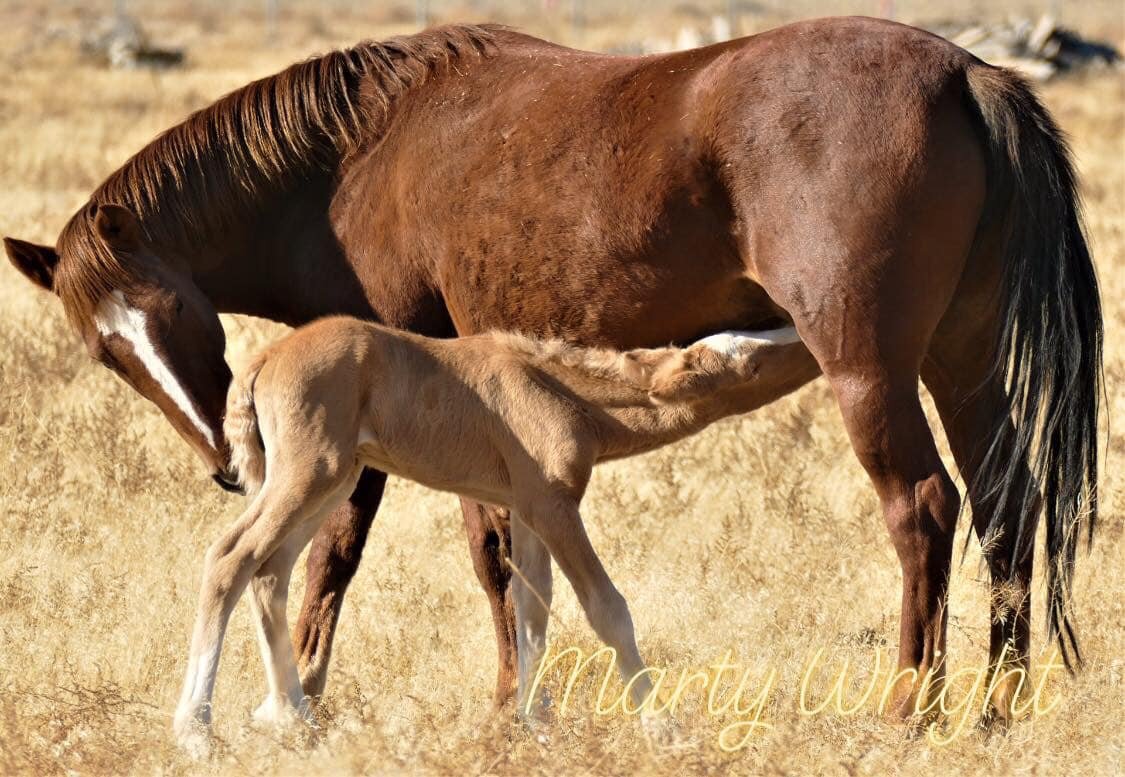April Monthly Highlights
volunteer highlight
This month’s volunteer spotlight shines on Tamara Gerdts, a dedicated volunteer and herd lead who’s been with the fertility control program since the beginning. Fun fact: she was the Project Manager when the American Wild Horse Campaign originally had the cooperative agreement to implement fertility control in 2015!
Tamara first got involved in wild horses soon after she moved to South Reno from Minnesota. Back then, she didn’t even know wild horses were still a staple of the West! She saw her first band while shopping for houses and absolutely fell in love. Eventually, as development expanded into the horses' natural migratory paths, Tamara started helping move horses from roads and out of neighborhoods. From there, her involvement grew -- she started helping to build fences, recruit volunteers, document horses and eventually became a fabulous darter. To date, including her 2015 program involvement, Tamara has darted nearly 600 mares! Her favorite part of darting is knowing she is making a positive difference for the safety and future of the wild horses, and hopefully, showing the Bureau of Land Management (BLM) and others that this is currently the best option to humanely manage wild horses across the United States.
Tamara dedicates her time to wild horses because they are so special to her. She loves to watch the band “family” dynamic. She learns by just watching the interactions and roles in each band and in the larger herds. Everyone has a role and there is a pecking order. The roles and activities change and adapt as new members join a band or foals are born. She loves the strength of wild horses and their ability to survive in the high desert. It’s amazing how they not only survive, but thrive right here in Reno where there are months with too little forage, and when summer brings little rain and break from the heat. They have an amazing ability to heal after sustaining some pretty awful injuries. Their resilience is astounding to see.
Tamara has a long background in project management, mostly in consumer electronics like computer software. As she winds down her career in anticipation of retirement and spending more time with the wild ones, she works in the commercial construction industry as an Office Administrator / Project Coordinator. Her background is very helpful for as a herd lead and identification database extraordinaire!
When her world gets crazy or stressful, she is calmed by visiting and photographing the wild ones! Thank you for all your hard work and dedication, Tamara!
Tamara out darting with an audience of bachelor stallions watching.
Tamara using our identification database to help keep records accurate and up to date
first steps
The first steps of a foal's life are key to the rest of their lives. If a foal doesn’t stand up, normally within an hour of birth, he or she becomes more vulnerable to predator attacks, the foal may not get the vital nutrients from nursing that is needed right away, and the band may leave the foal if he or she cannot stand. They’re incredibly cute and wobbly when trying to stand for the first time! Fun fact about foals: they’re born with 80-90% of leg length of a full-grown horse. A few weeks ago, Corenna Vance, president of Wild Horse Connection, which is the official range management group, posted incredible photos ofthe first few hours and steps of a new Virginia Range foal named Alvin. Take a look at Wild Horse Connection’s Facebook page to see the adorable photos!
baby reel
Check out some our favorite baby pictures so far! Hopefully this will bring a smile to your face when shelter in place gets you down.










